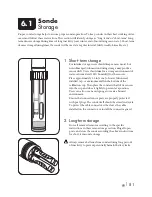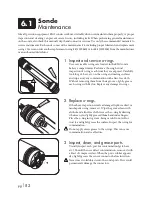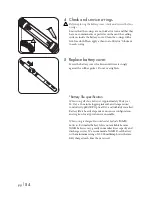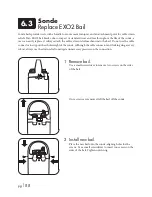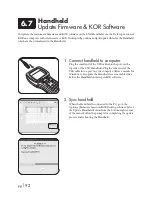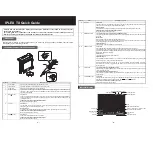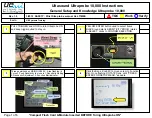
pg
|
81
Sonde
Storage
Proper sonde storage helps to ensure proper sonde operation. To keep sondes in their best working order,
users must follow these instructions. This section will identify storage as “long-term” or “short-term.”Long-
term denotes storage during times of long inactivity (over winter, end of monitoring season, etc.). Short-term
denotes storage during times the sonde will be used at a regular interval (daily, weekly, biweekly, etc.).
1 Short -term storage
For interim storage, users should keep sensors moist, but
not submerged; submersion during storage may produce
sensor drift. Users should aim for a storage environment of
water-saturated air (100% humidity) for the sensors.
Place approximately 0.5 in (1 cm) of water (deionized,
distilled, tap, or environmental) in the bottom of the
calibration cup. Then place the sonde with all of its sensors
into the cup and close it tightly to prevent evaporation.
Users can also use a moist sponge to create a humid
environment.
Ensure that unused sensor ports are properly protected
with port plugs. The sonde itself should be stored in dry air.
To protect the cable connector, either leave the cable
installed on the connector, or install the connector guard.
2 Long-term storage
Store all removed sensors according to the specific
instructions in their sensor storage section. Plug all open
ports, and store the sonde according the above instructions
for short-term sonde storage.
Always remove batteries from sondes during long periods
of inactivity to prevent potentially harmful battery leaks.
6.1
A















